
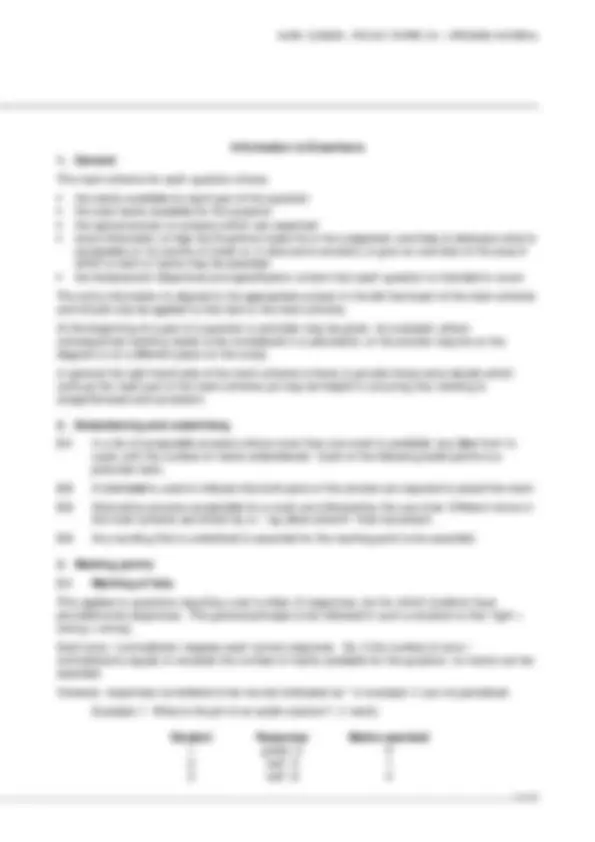
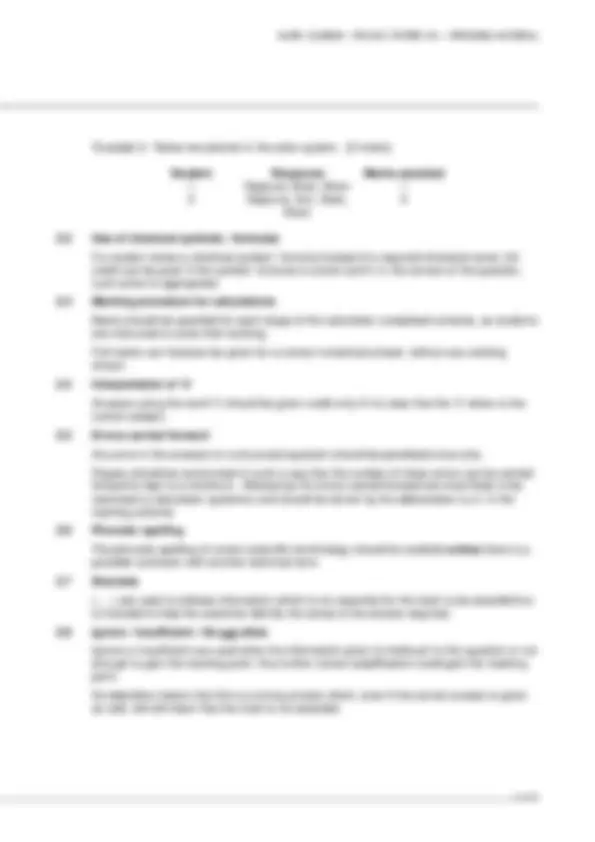
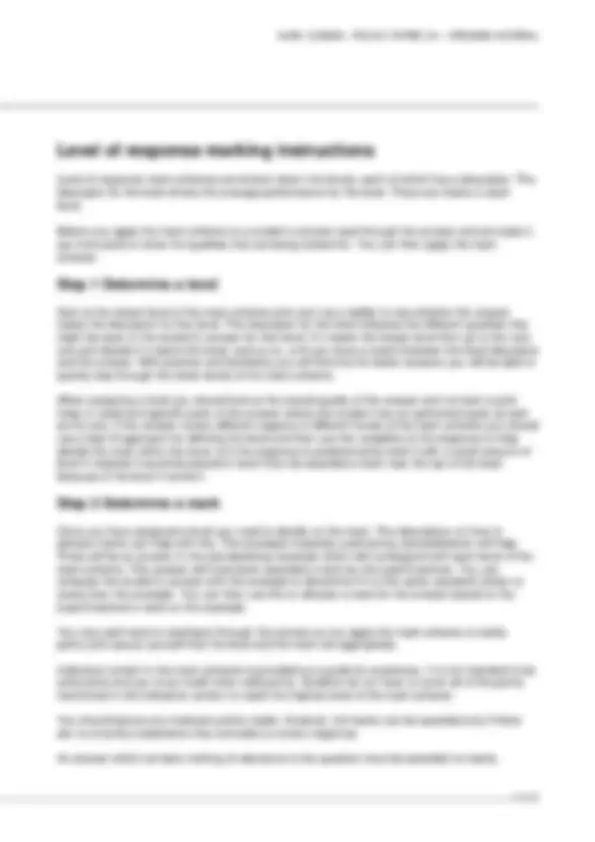
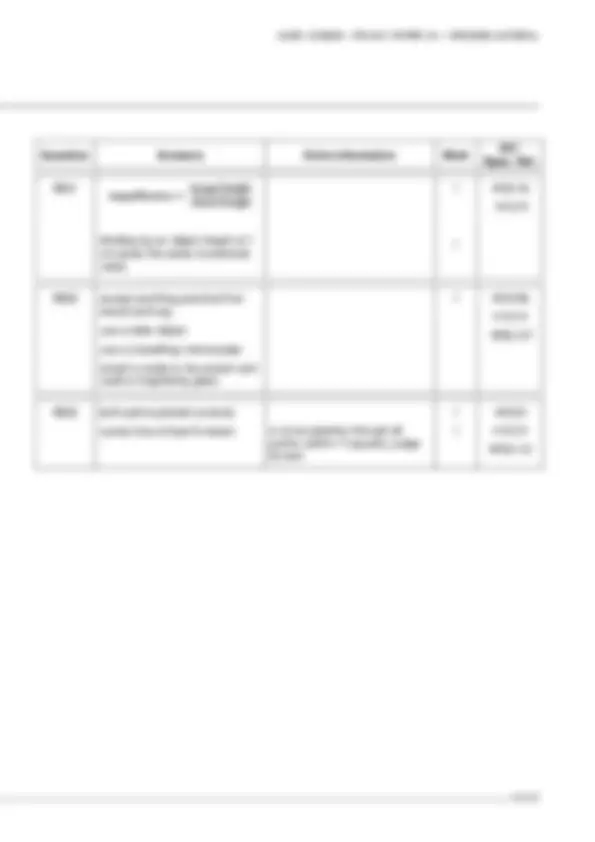
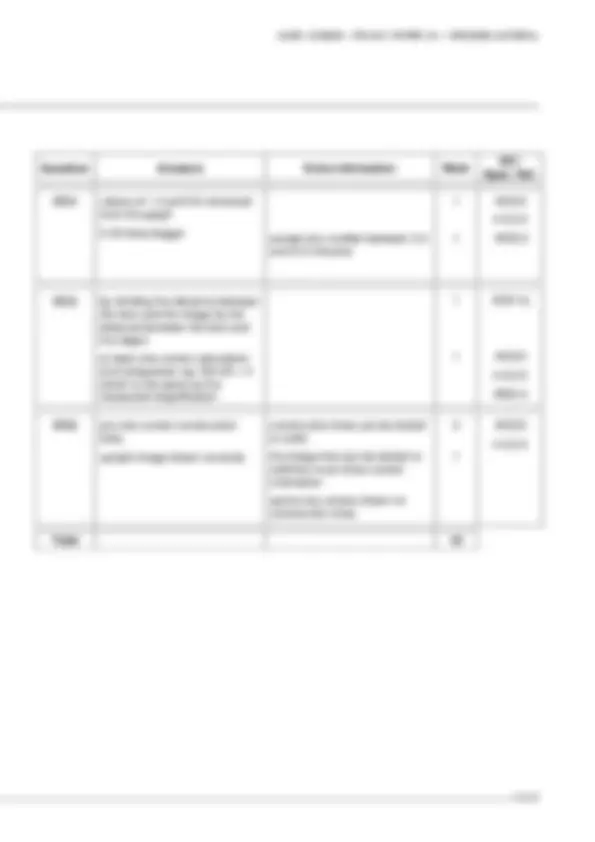
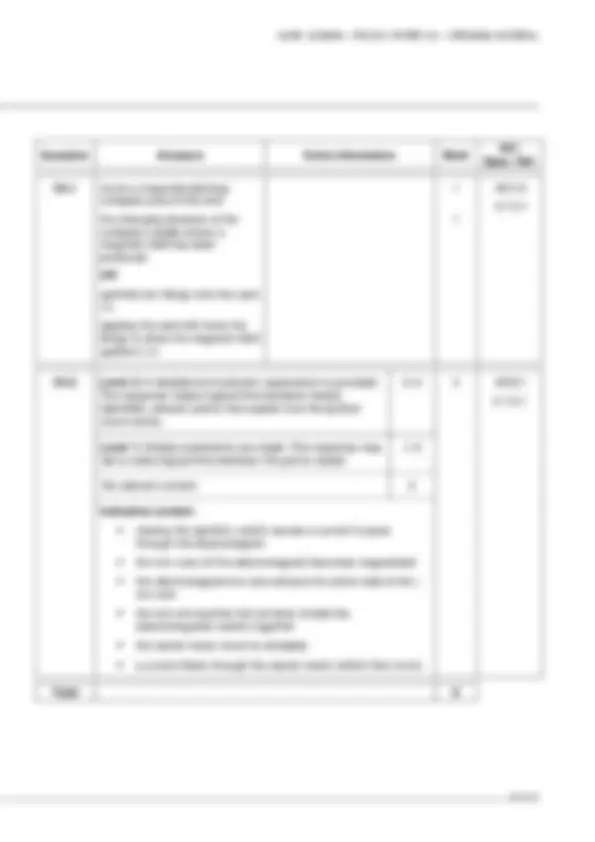
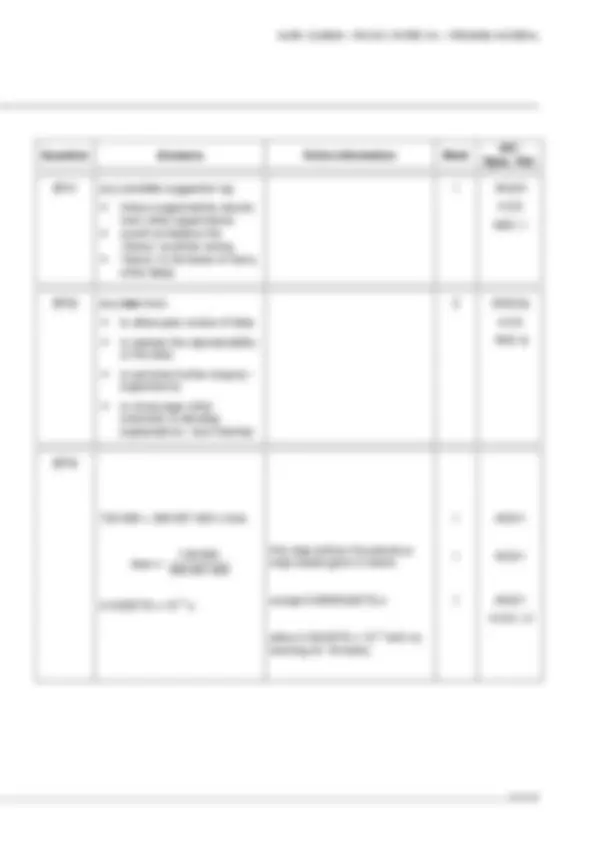
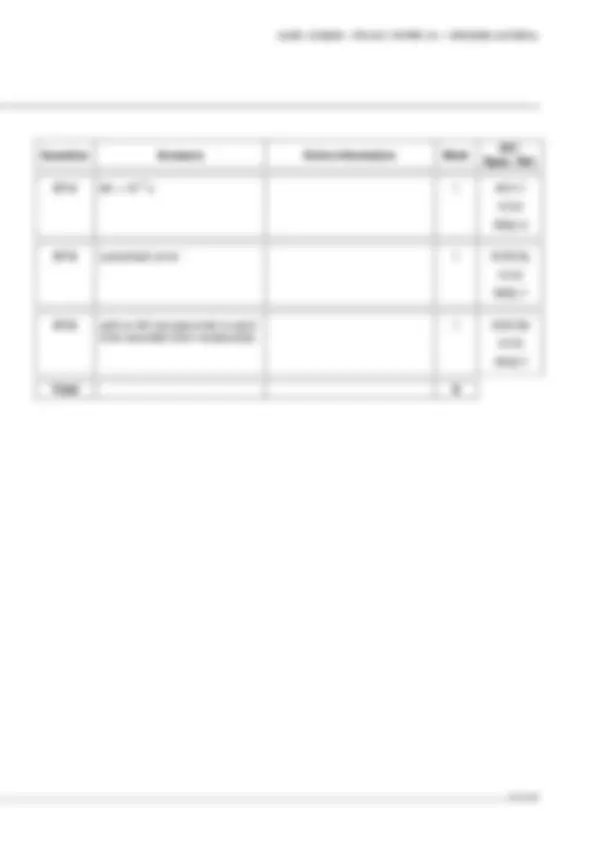
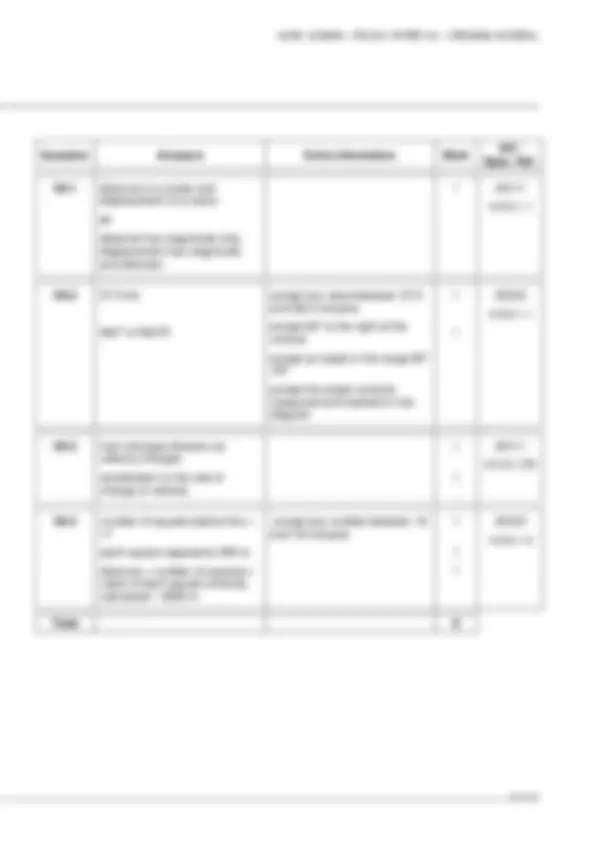
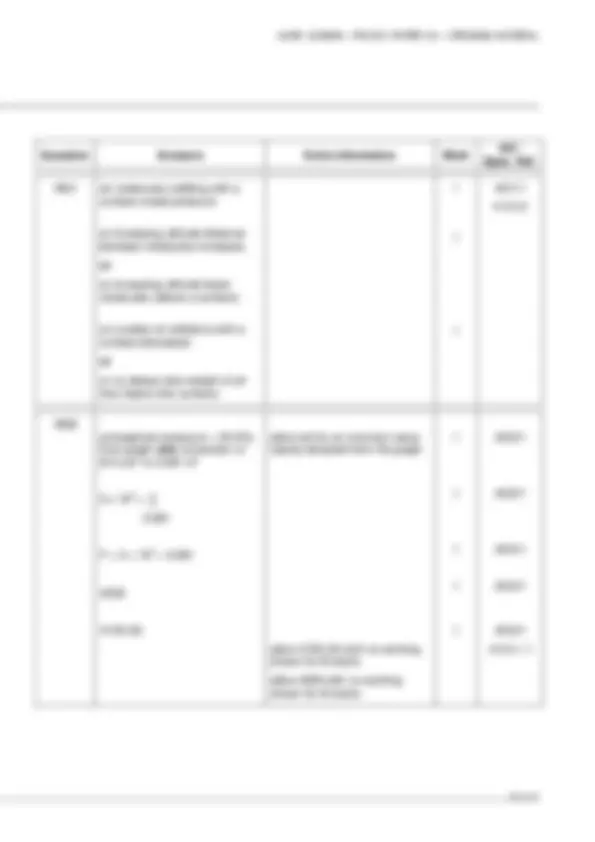
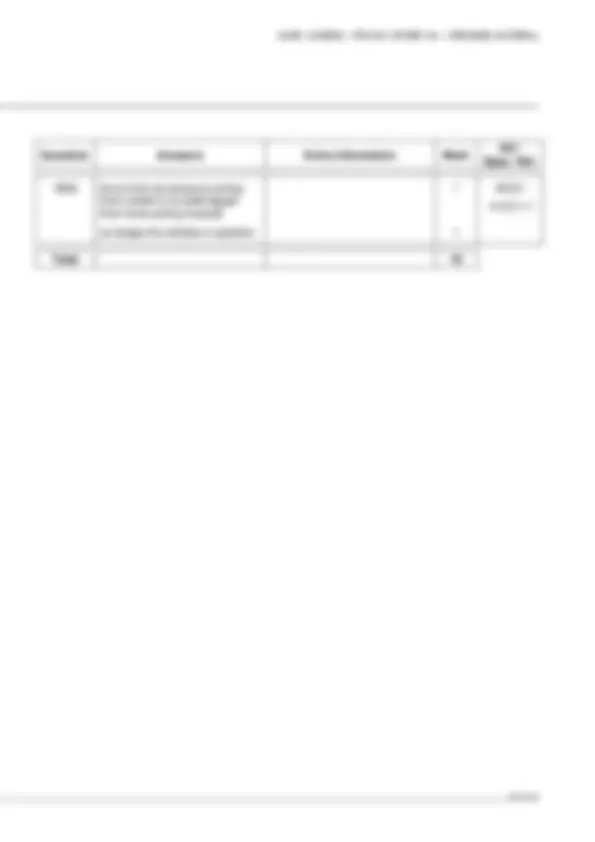
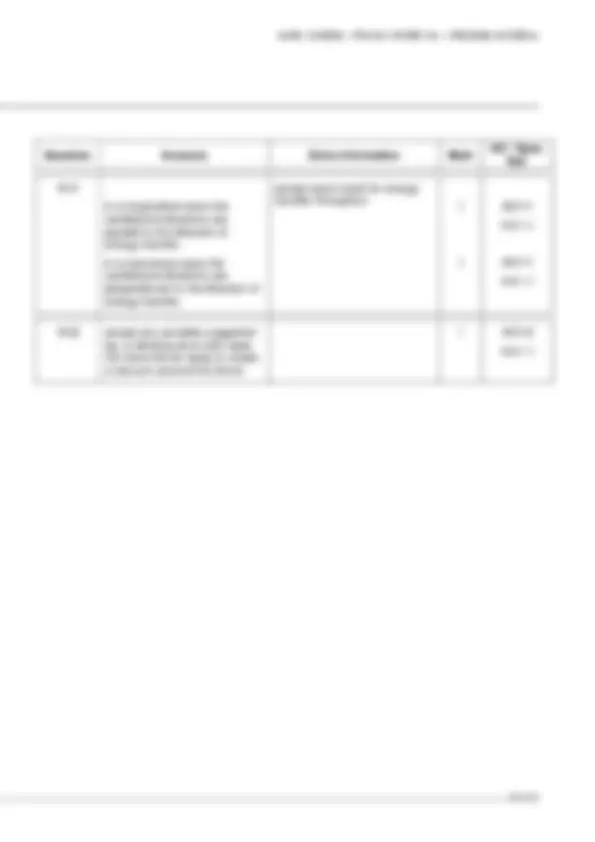
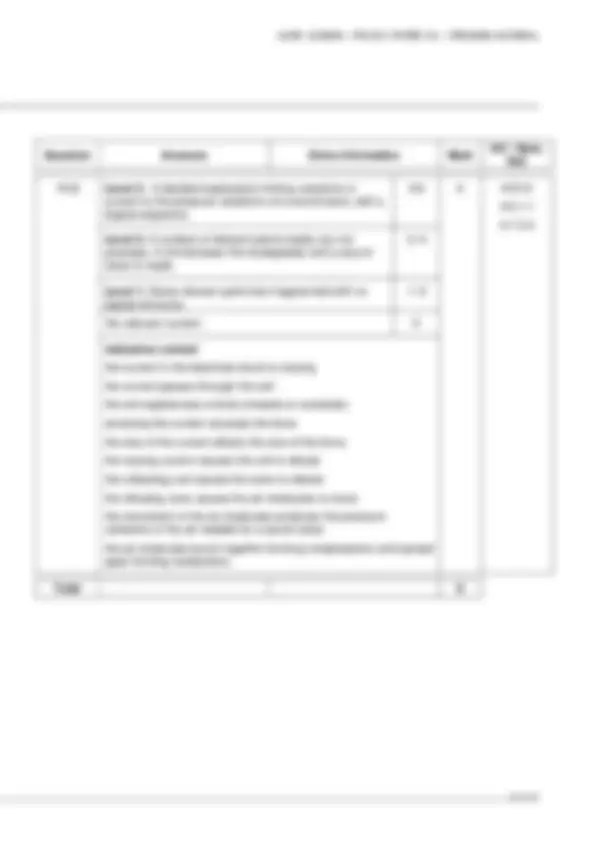
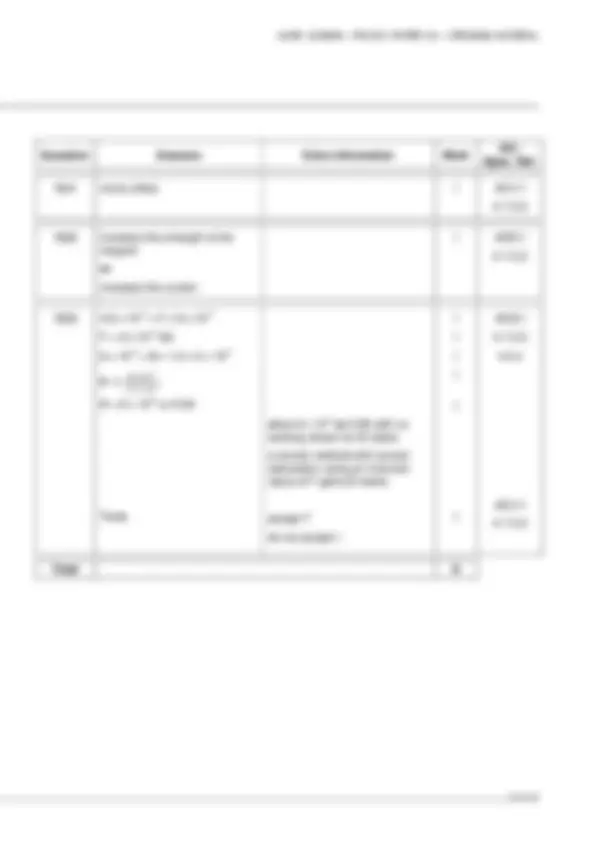


Study with the several resources on Docsity

Earn points by helping other students or get them with a premium plan


Prepare for your exams
Study with the several resources on Docsity

Earn points to download
Earn points by helping other students or get them with a premium plan
Community
Ask the community for help and clear up your study doubts
Discover the best universities in your country according to Docsity users
Free resources
Download our free guides on studying techniques, anxiety management strategies, and thesis advice from Docsity tutors
A mark scheme for GCSE Physics Paper 2H specimen material. It provides answers, extra information, and marks for various questions covering topics such as measuring spring extensions, redshift, refraction, and systematic errors. The mark scheme is intended to help examiners make judgements and delineate acceptable answers.
Typology: Summaries
1 / 22

This page cannot be seen from the preview
Don't miss anything!















Version 1.
Mark schemes are prepared by the Lead Assessment Writer and considered, together with the relevant questions, by a panel of subject teachers. This mark scheme includes any amendments made at the standardisation events which all associates participate in and is the scheme which was used by them in this examination. The standardisation process ensures that the mark scheme covers the students’ responses to questions and that every associate understands and applies it in the same correct way. As preparation for standardisation each associate analyses a number of students’ scripts. Alternative answers not already covered by the mark scheme are discussed and legislated for. If, after the standardisation process, associates encounter unusual answers which have not been raised they are required to refer these to the Lead Assessment Writer.
It must be stressed that a mark scheme is a working document, in many cases further developed and expanded on the basis of students’ reactions to a particular paper. Assumptions about future mark schemes on the basis of one year’s document should be avoided; whilst the guiding principles of assessment remain constant, details will change, depending on the content of a particular examination paper.
Further copies of this mark scheme are available from aqa.org.uk
Example 2: Name two planets in the solar system. (2 marks)
Student Response Marks awarded 1 Neptune, Mars, Moon 1 2 Neptune, Sun, Mars, Moon
3.2 Use of chemical symbols / formulae
If a student writes a chemical symbol / formula instead of a required chemical name, full credit can be given if the symbol / formula is correct and if, in the context of the question, such action is appropriate.
3.3 Marking procedure for calculations
Marks should be awarded for each stage of the calculation completed correctly, as students are instructed to show their working. Full marks can however be given for a correct numerical answer, without any working shown.
3.4 Interpretation of ‘it’
Answers using the word ‘it’ should be given credit only if it is clear that the ‘it’ refers to the correct subject.
3.5 Errors carried forward
Any error in the answers to a structured question should be penalised once only. Papers should be constructed in such a way that the number of times errors can be carried forward is kept to a minimum. Allowances for errors carried forward are most likely to be restricted to calculation questions and should be shown by the abbreviation e.c.f. in the marking scheme.
3.6 Phonetic spelling
The phonetic spelling of correct scientific terminology should be credited unless there is a possible confusion with another technical term.
3.7 Brackets
(…..) are used to indicate information which is not essential for the mark to be awarded but is included to help the examiner identify the sense of the answer required.
3.8 Ignore / Insufficient / Do not allow
Ignore or insufficient are used when the information given is irrelevant to the question or not enough to gain the marking point. Any further correct amplification could gain the marking point. Do not allow means that this is a wrong answer which, even if the correct answer is given as well, will still mean that the mark is not awarded.
Level of response marking instructions
Level of response mark schemes are broken down into levels, each of which has a descriptor. The descriptor for the level shows the average performance for the level. There are marks in each level.
Before you apply the mark scheme to a student’s answer read through the answer and annotate it (as instructed) to show the qualities that are being looked for. You can then apply the mark scheme.
Start at the lowest level of the mark scheme and use it as a ladder to see whether the answer meets the descriptor for that level. The descriptor for the level indicates the different qualities that might be seen in the student’s answer for that level. If it meets the lowest level then go to the next one and decide if it meets this level, and so on, until you have a match between the level descriptor and the answer. With practice and familiarity you will find that for better answers you will be able to quickly skip through the lower levels of the mark scheme.
When assigning a level you should look at the overall quality of the answer and not look to pick holes in small and specific parts of the answer where the student has not performed quite as well as the rest. If the answer covers different aspects of different levels of the mark scheme you should use a best fit approach for defining the level and then use the variability of the response to help decide the mark within the level, ie if the response is predominantly level 3 with a small amount of level 4 material it would be placed in level 3 but be awarded a mark near the top of the level because of the level 4 content.
Once you have assigned a level you need to decide on the mark. The descriptors on how to allocate marks can help with this. The exemplar materials used during standardisation will help. There will be an answer in the standardising materials which will correspond with each level of the mark scheme. This answer will have been awarded a mark by the Lead Examiner. You can compare the student’s answer with the example to determine if it is the same standard, better or worse than the example. You can then use this to allocate a mark for the answer based on the Lead Examiner’s mark on the example.
You may well need to read back through the answer as you apply the mark scheme to clarify points and assure yourself that the level and the mark are appropriate.
Indicative content in the mark scheme is provided as a guide for examiners. It is not intended to be exhaustive and you must credit other valid points. Students do not have to cover all of the points mentioned in the Indicative content to reach the highest level of the mark scheme.
You should ignore any irrelevant points made. However, full marks can be awarded only if there are no incorrect statements that contradict a correct response.
An answer which contains nothing of relevance to the question must be awarded no marks.
Question Answers Extra information Mark
Spec. Ref.
02.1 red–shift 1 AO1/ 4.8.
02.2 the further away from the Earth, the faster a galaxy is moving
1 AO3/1a 4.8. WS3.
02.3 strength as the balloon expands the dots get further apart, representing the galaxies moving apart weakness dots are only on the surface of the balloon, galaxies are throughout the universe or there is a limit to how far the balloon can expand
AO3/1b 4.8. WS1.
02.4 both theories suggest that the Universe is expanding
02.5 new evidence / observations that cannot be explained by Theory 1
accept specific example of new evidence ie CMBR
Total 6
Question Answers Extra information Mark
Spec. Ref.
magnification ൌ
image height object height
dividing by an object height of 1 cm gives the same (numerical) value
AO3/1b 4.6.2.
03.2 accept anything practical that would work eg: use a taller object use a (travelling) microscope attach a scale to the screen and used a magnifying glass
1 AO3/3b 4.6.2. WS2.3/
03.3 both points plotted correctly correct line of best fit drawn a curve passing through all points (within ½ square), judge by eye
Question Answers Extra information Mark
Spec. Ref.
04.1 move a (magnetic/plotting) compass around the wire the changing direction of the compass needle shows a magnetic field has been produced OR sprinkle iron filings onto the card (1) tapping the card will move the filings to show the magnetic field (pattern) (1)
04.2 Level 2: A detailed and coherent explanation is provided. The response makes logical links between clearly identified, relevant points that explain how the ignition circuit works.
Level 1: Simple statements are made. The response may fail to make logical links between the points raised.
No relevant content 0
Indicative content closing the (ignition) switch causes a current to pass through the electromagnet the iron core (of the electromagnet) becomes magnetised the electromagnet/iron core attracts the (short side of the ) iron arm the iron arm pushes the contacts (inside the electromagnetic switch) together the starter motor circuit is complete
a current flows through the starter motor (which then turns)
Total 6
Question Answers Extra information Mark AO / Spec. Ref.
05.1 Level 3: A detailed and coherent plan covering all the major steps is provided. The steps in the method are logically ordered. The method would lead to the production of valid results. A source of inaccuracy is provided.
Level 2: The bulk of a method is described with mostly relevant detail. The method may not be in a completely logical sequence and may be missing some detail.
Level 1: Simple statements are made. The response may lack a logical structure and would not lead to the production of valid results.
No relevant content 0
Indicative content place a glass block on a piece of paper draw around the glass block and then remove from the paper draw a line at 90 o^ to one side of the block (the normal) use a protractor to measure and then draw a line at an angle of 20 o to the normal replace the glass block using a ray box and slit point the ray of light down the drawn line mark the ray of light emerging from the block remove the block and draw in the refracted ray measure the angle of refraction with a protractor repeat the procedure for a range of values of the angle of incidence possible source of inaccuracy the width of the light ray which makes it difficult to judge where the centre of the ray is
05.2 velocity/speed of the light decreases
allow velocity/speed of the light changes
Total 7
Question Answers Extra information Mark
Spec. Ref.
07.1 any sensible suggestion eg theory supported by results from other experiments could not believe the ‘theory’ could be wrong ‘theory’ is the basis of many other ideas
07.2 any two from: to allow peer review of data
to assess the reproducibility of the data
to promote further enquiry / experiments
to encourage other scientists to develop explanations / new theories
2 AO3/2a 4.5. WS1.
730 000 = 300 007 400 x time
time ൌ
2.43(3273) x 10 –3^ s
this step without the previous step stated gains 2 marks
accept 0.00243(3273) s
allow 2.43(3273) x 10 –3^ with no working for 4 marks
Question Answers Extra information Mark
Spec. Ref.
07.4 60 × 10 –9^ s 1 AO1/ 4.5. WS4.
07.5 systematic error 1 AO3/2a 4.5. WS3.
07.6 add on 60 nanoseconds to each time recorded (then recalculate)
1 AO3/3b 4.5. WS3.
Total 9
Question Answers Extra information Mark
Spec. Ref.
09.1 the distance travelled under the braking force
09.2 the reaction time will increase increasing the thinking distance (and so increasing stopping distance)
increases stopping distance is insufficient
09.3 No, because although when the speed increases the thinking distance increases by the same factor the braking distance does not. eg increasing from 10 m/s to 20 m/s increases thinking distance from 6 m to 12 m but the braking distance increases from 6 m to 24 m
AO3/1a
09.4 If the sled accelerates the value for the constant of friction will be wrong.
09.5 only a (the horizontal) component of the force would be pulling the sled forward the vertical component of the force (effectively) lifts the sled reducing the force of the surface on the sled
Question Answers Extra information Mark
Spec. Ref.
09.6 – u 2 = 2 × –7.2 × 22
u = 17.7(99) 18
award this mark even with 0 2 and / or the negative sign missing
allow 18 with no working shown for 3 marks allow 17.7(99) then incorrectly rounded to 17 for 2 marks
Total 11
Question Answers Extra information Mark
Spec. Ref.
10.3 force from air pressure acting from inside to outside bigger than force acting inwards so keeps the window in position
Total 10
Question Answers Extra information Mark
AO / Spec. Ref.
in a longitudinal wave the oscillations/vibrations are parallel to the direction of energy transfer. in a transverse wave the oscillations/vibrations are perpendicular to the direction of energy transfer.
accept wave travel for energy transfer throughout (^1)
11.2 accept any sensible suggestion eg. a vibrating drum skin does not move the air away to create a vacuum (around the drum)